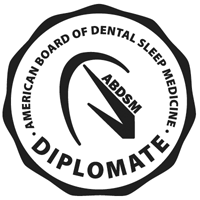Children and Adult Lip, Cheek and Tongue Tie Release
Tongue-ties and lip ties are common oral conditions that occur at birth and can lead to problems with speaking, eating, and sleep if left untreated. Lip and tongue ties for infants, children, and adults can be easily corrected with a minimally invasive procedure at Rachel Barnhart DDS.
What is a Tongue-Tie?
A typical lingual frenum – the thin band of tissue that connects the tongue to the floor of the mouth – is located near the bottom middle of the tongue and allows for a wide range of tongue mobility; a tongue-tie is caused by an unusually short, thick, or tight frenum that tethers the bottom of the tongue’s tip to the floor of the mouth. While this can lead to problems with breastfeeding in babies, children and adults often experience limited ability with:
- Speaking
- Eating
- Sleeping
- Drinking
- Breathing
Symptoms of Tongue-Tie in Children and Adults
Tongue-tie in children and adults can typically be visually diagnosed, but other symptoms of tongue-tie can include:
- Issues sticking the tongue out past the lower front teeth
- Weak cheek and/or jaw muscles
- Trouble lifting the tongue up to the upper teeth, or moving the tongue from side to side
- The tongue looks notched or heart-shaped while stuck out
Children and Adult Tongue-Tie Treatment
At our Redding office, Dr. Barnhart performs tongue-tie release surgery on patients of all ages. For treatment of tongue-tie in children and adults, Dr. Barnhart will prescribe an orofacial myofunctional therapy regimen both before and after surgery. This ensures that the frenum will not reattach. Treatment plans will be customized for all patients depending on their individual needs.
What is a Lip or Cheek Tie?
Similar to tongue-tie, a lip tie can also develop at birth and affect a child’s oral range of motion. A lip tie is caused by the frenulum – or the piece of tissue behind the upper lip or cheeks – being too stiff or too thick. This keeps the upper lip and/or cheeks from moving freely.
Although lip and cheek ties are less common than tongue ties, these ties can also potentially affect other activities that involve mouth mobility if the condition is not corrected.
Lip or Cheek Tie Treatment
As with tongue-tie treatment, lip or cheek tie can be medically diagnosed during your consultation with Dr. Barnhart if you or your child are exhibiting symptoms. After a thorough examination, Dr. Barnhart will discuss myofunctional therapy, surgery, or other treatment options with you to achieve the best outcome for you or your child’s oral health, sleep, and overall well-being.
Contact Our Office for a Consultation
At Rachel Barnhart DDS, we combine the latest techniques and technology with a soothing environment to provide our patients with the best care. Book an appointment online or call to schedule a consultation today!













